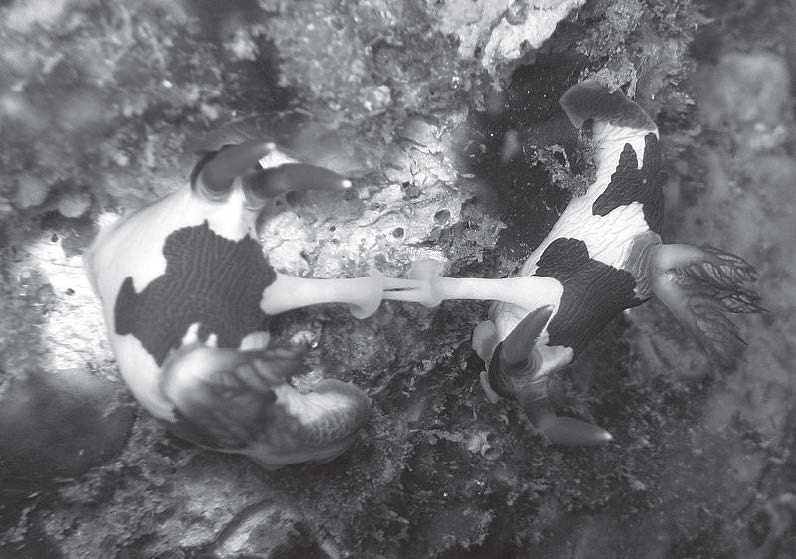By Miranda Louwerse (Contributor) – Email

The dean of science’s seminar series continued last Thursday with a talk titled, “The Nature of Sex,” by adjunct professor of biology, Carin Bondar. Bondar has a PhD in biology from the University of British Columbia, and is internationally recognized for her studies of sex in the animal kingdom. She was a speaker at TED Global 2013 in Scotland, and has also been on Discovery Channel’s Outrageous Acts of Science and Stephen Hawking’s Brave New World. Bondar’s talk at UFV was well attended by members of the administration, faculty, students, and the community.
Sex in the animal kingdom has none of the boundaries and limitations that society places on human sexual behaviours, making it a fascinating field of study. Some of the descriptions of animal sex that Bondar gave are simultaneously grotesque and intriguing.
In one example, Bondar described the sexual process of bed bugs. The male bed bug stabs the female in the abdomen to inseminate her, leaving the female with a wound that is prone to infection. As this is a traumatic experience, female bed bugs have evolved a spermelege, an organ that helps them to heal more quickly. However, male and female bed bugs look similar, so male bed bugs are often mistaken for female and get stabbed by other males. As a result, male bed bugs also evolved a spermelege. The male spermelege looks different than the female one, as a signal to other males that the bug is actually a male and they shouldn’t stab them. The fascinating thing, Bondar says, is that females in turn have evolved so that their spermelege look more like the male one, thereby reducing reproductive trauma.
In another example, Bondar described the chemical warfare of sex between sea slugs. Sea slugs are hermaphrodites, meaning they have both male and female reproductive organs. Because of this, sea slugs are literally “at war with themselves,” Bondar describes. Since being female requires a sea slug to spend the energy to carry eggs, it is preferable for a slug to act as the male during sexual activities. So one slug will stab the other in the head, transferring chemicals that decrease the “maleness” of the other slug, allowing itself to be the male.
Bondar also described how homosexual sex is prevalent in all species, and gave three types of homosexuality. The first type, sexual behaviour, is present in all species. The second, sexual preference, where animals would rather have homosexual sex but will also have heterosexual sex, is very common. Bondar stated that sexual orientation, where the animal has sex exclusively homosexually, is almost exclusive to humans.
Bondar finished her talk by describing the difference in child care among species. While playing favourites with your children is frowned upon by human society, Bondar described that in the animal kingdom it makes biological sense. If a mother sees one father as a better fit, she will give more resources and spend more energy on his offspring, neglecting children from other fathers.
There are also many examples of infanticide and child abuse in the animal kingdom, especially with animals who live in groups. Meerkats live in small groups, and resources can be thin. It is very common for a mother to kill another mother’s children in order to get more resources for her own. There are also bird species where child abuse is common. While a chick’s parents are out finding food, another adult bird will come and peck at the chick, and sexually abuse it. Interestingly, biologists who study this see a cycle of abuse arise from it. Birds that were abused as chicks were more likely to abuse other chicks when they became adults.
The grandmother hypothesis is an important aspect of childcare studied by biologists. Since childcare is such a high-energy process, many mothers will avoid having more children when they are raising the others. However, if there is a grandmother around to help with childcare, the mother will have more energy to reproduce again. Bondar gave the example of a whale pod, where the grandmother hypothesis is seen. The grandmother’s children stay with her, and when her daughter is ready, she leaves to become inseminated and then returns, where her mother will help to raise her child. Since this process takes much more energy for the grandmother, she tends to favour her male children. The male children will leave the pod to inseminate a female and then return, but with no extra baby in tow. In this way, the grandmother increases her biological fitness, but she doesn’t have to put in any extra energy.
Bondar’s book on this topic, The Nature of Sex, will be available in the USA and Canada in 2016.


